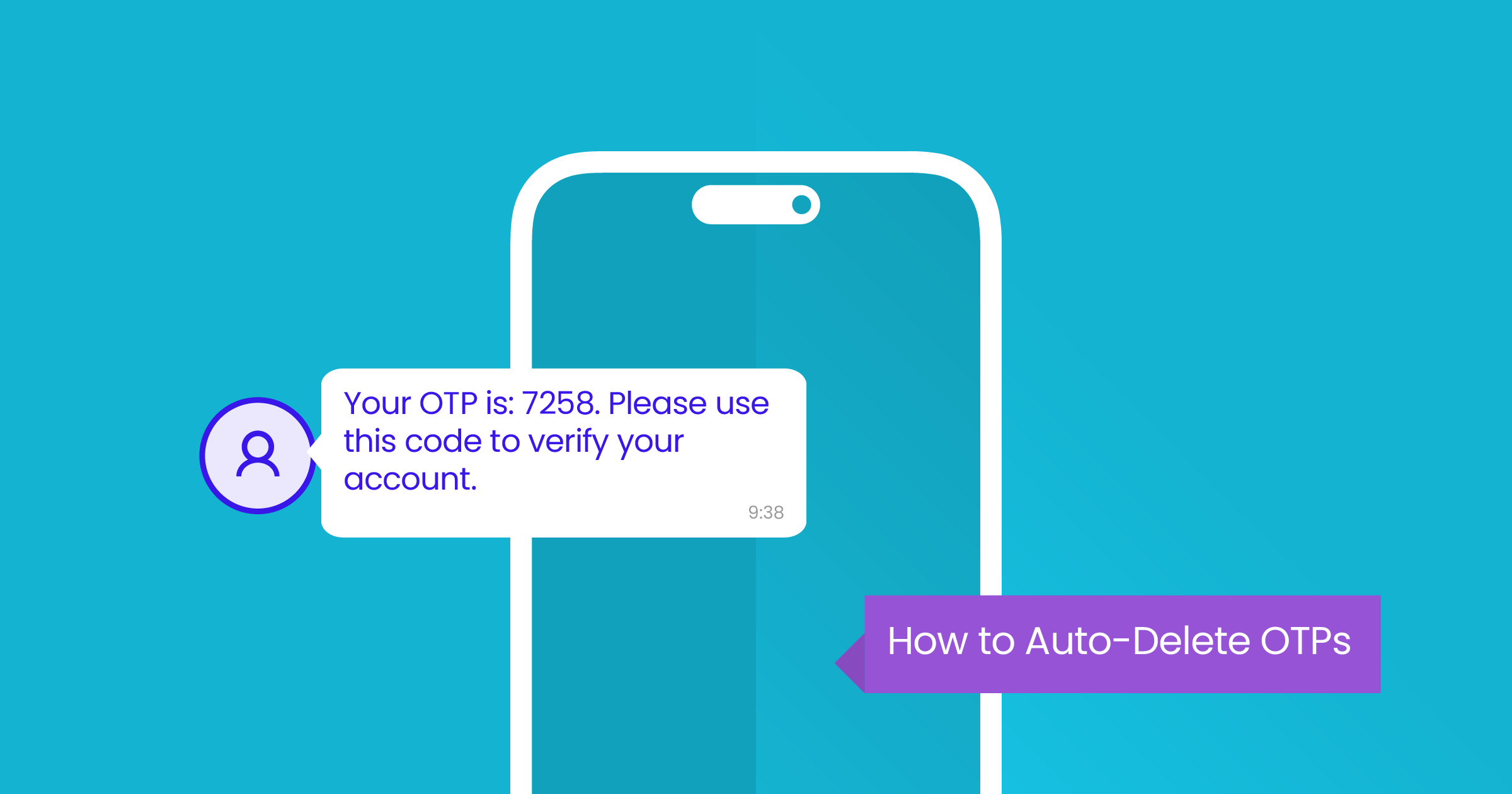How to Auto-Delete OTP Messages on Android and iOS
Published: Apr 2, 2024

Our phones have become the nexus of our lives.
These devices hold everything from sensitive emails to financial transactions.
Yet, without additional layers of security like 2FA, our digital identities are vulnerable to exploitation.
But at the same time, these OTP messages quickly clutter our inboxes, and we're left with hundreds of messages full of expired codes.
To solve this issue, you can set up auto-deletion for OTPs.
The Importance of OTPs and Two-Factor Authentication
Digital security is something we should all practice, and that's where OTPs and two-factor authentication (2FA) come in handy.
With the rise of cyber threats and data breaches, protecting sensitive information has become a top priority.
OTPs, or one-time passwords, add an extra layer of security by requiring users to enter a unique code, typically sent via SMS, in addition to their login credentials.
While the time varies per code, but typically OTP messages remain valid for only a brief period, usually just a few minutes.
Consider the repercussions of not safeguarding our accounts with 2FA and OTPs.
Hackers capitalize on this vulnerability and gain unauthorized access to our most intimate data.
Whether it's our email, social media, or banking accounts, the consequences of a breach can be catastrophic.
And the worst part is that it. can lead to identity theft, financial loss, and reputational damage.
Text Message API Service Pricing
Dexatel employs a pay-as-you-go approach that charges you per sent message. This is the most affordable SMS gateway pricing model, and the service costs are free of setup, monthly, or any other fees.
The Problem with OTP Clutter
When we don't enable auto-delete OTPs, our messages app quickly becomes overwhelmed with one-time passwords from various apps.
Without proper management, our inbox becomes cluttered with passcodes that lose their relevance after 24 hours.
This makes it challenging to find important messages and increases the risk of missing critical information buried among the numerous OTPs.
Even though some apps automatically detect OTPs and log them for us, the responsibility falls on us to keep our messages clean.
However, the process varies across different messaging apps and third-party platforms.
Without clear message rules and settings to enable auto-deletion, we're left with an inbox filled with outdated codes.
Users must actively choose messages settings that automatically delete OTPs after 24 hours.
This way, you make sure that your messages app remains organized, your inbox stays clutter-free, and you can find relevant information without sifting through irrelevant OTPs.
Doing so allows you to enable clean practices for organizing your text messages.
How to Auto-Delete OTPs on Google Messages
The Google Messages app is renowned for its user-friendly interface and robust features.
One that's gaining traction is the ability to automatically delete OTP messages.
This nifty feature not only enhances message organization but also mitigates the risk of unauthorized access to accounts.
By enabling auto-delete OTPs in the Messages settings, users can ensure that older OTP messages are promptly removed.
This reduces inbox clutter and safeguards sensitive information.
Here's how you can auto-delete your one-time password when using Android phones:
Open Google Messages
Tap on your profile picture
Go to Messages settings, then Message organization
Tap on Auto-delete OTPs after 24 hrs
How to Auto-Delete OTPs on iOS
iOS 17 has introduced a convenient feature for iPhone users, allowing automatic deletion of one-time passcodes, which maintains inbox cleanliness while preserving security.
Here's how to set it up:
Access the Settings app on your iPhone
Go to passwords
Tap Password Options
Under Verification Codes, toggle on Clean Up Automatically
With this feature enabled, iOS 17 will promptly remove SMS-based 2FA codes after approximately 24 hours.
If you're concerned about accessing deleted codes later, simply go to the Messages app, tap Edit, and select Show Recently Deleted to retrieve discarded codes.
Top Tips for Managing Digital Security on Your Phone
Stay informed about account activity by activating logging features available in most apps. This allows you to monitor access and detect any suspicious behavior promptly.
Take advantage of built-in message organization tools, such as those found in Android messaging apps.
While a third-party app can enhance functionality, be selective and mindful of security risks. Choose them carefully and only grant necessary permissions to minimize potential vulnerabilities.
Don't overlook the three dots menu in apps—these often have essential settings for managing security features. Regularly review and adjust them to optimize security and privacy preferences.
Keep your Android operating system and applications up-to-date to ensure you have the latest security patches and features. Running Android updates promptly helps safeguard against new threats and vulnerabilities.
What Alternatives to Use Instead of SMS One-Time Passwords
Instead of SMS OTPs, consider the following alternatives:
Authenticator apps: Use authentication applications like Google Authenticator, Microsoft Authenticator, or Authy to generate time-based OTPs directly on your device.
Hardware tokens: Employ hardware tokens or security keys, such as YubiKey or Titan Security Key, for 2FA. These physical devices offer an extra layer of security by requiring users to physically plug in or tap the device to authenticate.
Biometric authentication: Use biometric authentication methods such as fingerprint or facial recognition to secure your account.
Push notifications: Opt for push notifications sent to your smartphone or other devices for authentication purposes.
Time-based One-Time Password (TOTP): Implement TOTP-based authentication, where a temporary password is generated based on a shared secret and the current time. Authenticator applications commonly support TOTP codes.
